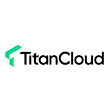 This article is brought to you by Titan Cloud.
This article is brought to you by Titan Cloud.
For any fuel distributor, managing daily deliveries can be a significant logistical challenge, made even harder by rising costs and the complexity of coordinating drivers, routes, loads and schedules. According to the American Transportation Research Institute (ATRI), driver wages jumped more than 15% in recent years, reaching their highest levels on record. With diesel prices also continuing to put pressure on operating budgets, controlling labor and fleet costs has become a top priority for fuel operators everywhere.
Many distributors have long relied on manual systems or point solutions built for siloed logistics. “These limited methods involve dispatchers spending hours manually building loads for an entire fleet, coordinating countless variables from delivery windows and product types to driver hours and specific routing constraints,” said Paul Lauinger, SVP of North America sales at Titan Cloud.
He noted that this administrative burden can be compounded by the unpredictable nature of daily operations, where “last-minute order changes, shifts in schedules or a driver not showing up can derail an entire day’s plan.” Without the right technology, dispatchers are forced to react manually, often with suboptimal results and wasted costs.
But, Lauinger pointed out, that way of operating often can’t deliver the efficiency or margins distributors need today.
“With our customers, we’ve seen firsthand how quickly driver overtime can add up,” Lauinger said. “Fuel operators and dispatchers work hard to build efficient loads and routes, but the daily variability and complexity make it nearly impossible to stay ahead without the right tools. That’s what’s changed now.”
AI-Optimized Logistics
LTL (Less-Than-Truckload), or metered truck deliveries, create one of the most demanding challenges in fuel logistics. Unlike its FTL (Full Truckload) counterparts, which involve a single product and destination, LTL requires combining dozens of smaller orders for multiple products and locations into a single, optimal load and route.
“In contrast to LTL, the complexity with FTL operations comes from optimizing routes by coordinating the driver, truck, terminal and delivery drop to minimize empty miles and avoid retained loads. This must be done in real time, as new orders often arrive throughout the day,” Lauinger explained, stating, “The true value of our tool is its ability to intelligently design routes while balancing freight and carrier costs, order minimums and overall truck utilization.”
AI-driven load and route optimization are engineered to solve these exact challenges. Instead of relying on manual planning, Titan Cloud technology uses advanced algorithms to automate the entire process, providing dispatchers with data-driven guidance for every delivery, Lauinger said. This comprehensive solution goes beyond basic routing to manage unique variables that include:
- Real-time constraints: Dynamically adjusting routes based on site availability, hazmat regulations and driver hours-of-service limits.
- Inventory management: Efficiently consolidating orders to reduce empty miles and minimize undelivered fuel (retains) left on trucks at the end of the day.
- Flexibility for all loads: The same core technology manages all types of delivery needs—LTL, FTL and split loads.
The real-time visibility and control provided by the platform empower operators to make smarter decisions, quickly responding to shifting priorities and opportunities.
Saving Millions on Driver Overtime
For one of North America’s largest independent fuel distributors, this approach to LTL has delivered immediate and measurable results. Lauinger said that by moving away from manual planning, this company is on track to achieve significant annual overtime savings. “Additionally, the solution has given back each dispatcher two to three hours per day and improved overall truck utilization, allowing fleets to move the same volume with fewer trucks on the road,” he said.
The real-time visibility and control provided by the platform empower operations to make smarter decisions at every level. From managing supplier allocations and fuel pricing to responding quickly when delivery priorities shift, operators are building a more resilient business with stronger margins.
What Lies Ahead in Logistics
The industry is moving beyond reactive dispatching, but implementing a new solution is a critical decision for distributors. Not all advanced algorithms are created equal, and a platform’s true value is only realized when it is built on robust data science and a deep understanding of the industry’s specific challenges, said Adi Raz, VP of data science at Titan Cloud.
“The difference between a theoretical model and a successful real-world solution is a deep, boots-on-the-ground understanding of our customers’ operations,” Raz said. “Our data science isn’t an abstract concept or black box; it’s rooted in the daily workflows of dispatchers and drivers, ensuring our AI delivers not just answers, but solutions that work.”
Experience the benefits of AI-driven load and route optimization. Connect with Titan Cloud at the 2025 NACS Show and experience the only unified platform for downstream fueling.